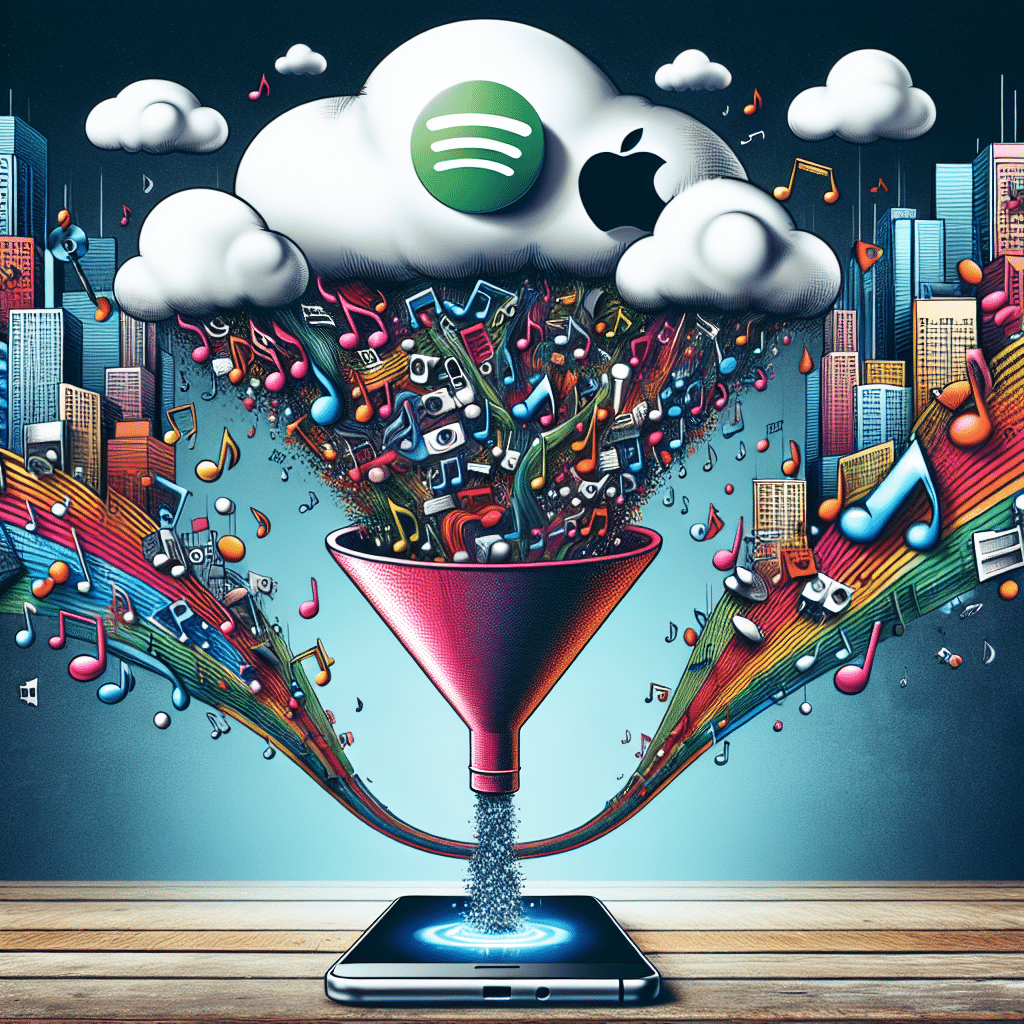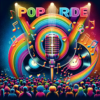Streaming Wars: How Spotify and Apple Music are Influencing Pop Music Trends

Introduction
In recent years, the landscape of the music industry has been dramatically reshaped by the emergence of streaming platforms, most notably Spotify and Apple Music. These platforms have not only transformed how music is consumed but also how it is created, marketed, and understood within the broader context of popular culture. This article delves into the historical context of these platforms, highlights key artists who have risen to stardom through their utilization, examines current trends in pop music, and discusses the cultural impact of the ongoing streaming wars.
Historical Context
The rise of streaming services can be traced back to the early 2000s when the music industry began to grapple with the repercussions of illegal downloading and the decline of physical album sales. The launch of platforms like Spotify in 2008 and Apple Music in 2015 marked a significant pivot in how consumers accessed music.
See Also: Catchy Beats and Powerful Voices: Exploring the Best Pop Artists of 2023
Catchy Beats and Powerful Voices: Exploring the Best Pop Artists of 2023Initially, Spotify introduced a freemium model, allowing users to listen to a vast library of music for free, supported by ads, or opt for a subscription for an ad-free experience. Apple Music, on the other hand, entered the market with an established reputation in digital music sales through iTunes, emphasizing a more curated approach with exclusive releases and artist collaborations.
Both platforms also recognized the importance of playlists in shaping music consumption habits. Spotify’s algorithms create personalized playlists such as Discover Weekly, whereas Apple Music's curated playlists leverage human curation. As a result, playlists have become a powerful tool not only for discovery but also for determining what music becomes popular.
Key Artists Influenced by Streaming
Several artists epitomize the transformative power of streaming platforms in shaping contemporary pop music. For instance, artists like Billie Eilish and Lil Nas X have capitalized on Spotify and Apple Music to catapult their careers.
See Also: Breakthrough Stars: Pop Artists Who Are Shaking Up the Charts
Breakthrough Stars: Pop Artists Who Are Shaking Up the ChartsBillie Eilish burst onto the scene with her single "Ocean Eyes," which gained traction on Spotify and catapulted her into mainstream popularity. Eilish's distinct sound and the way she shaped her music using digital production tools resonate strongly with the younger generation, propelled by her extensive streaming presence.
Similarly, Lil Nas X's "Old Town Road" became a viral sensation in part due to platforms like TikTok and Spotify's extensive playlisting. The song's unique fusion of country and rap defied traditional genres, showcasing how streaming platforms can disrupt expected musical hierarchies and categories.
These artists reveal how streaming has democratized access to the industry, allowing diverse voices and genres to flourish beyond the constraints of traditional radio play or record label gatekeeping.
Current Trends in Pop Music
See Also: Beyond the Dance Floor: The Shift Towards Intimate, Reflective Pop Ballads
Beyond the Dance Floor: The Shift Towards Intimate, Reflective Pop BalladsThe influence of Spotify and Apple Music has manifested in several trends within the pop music genre. One significant trend is the shortened attention span of listeners, which has led to the rise of songs designed to hook audiences within the first few seconds. This trend can be seen in the prevalence of catchy intros and repetitive choruses, elements that are user-tested for maximum engagement.
Additionally, the concept of singles over albums has gained traction, with artists increasingly releasing individual tracks to maintain a continuous presence in the streaming ecosystem. Consequently, artists are more inclined to drop multiple singles throughout the year rather than a full album, adapting to the demand for fresh content in an oversaturated market.
Collaborations have also become prominent in pop music, showcasing a strategy where artists from different genres collaborate to reach diverse listener bases. This is particularly evident in cross-genre partnerships, which are encouraged by algorithms that promote tracks from various styles based on user listening habits.
Cultural Impact
See Also: Pop Pride: The Impact of LGBTQ+ Artists on Mainstream Music Culture
Pop Pride: The Impact of LGBTQ+ Artists on Mainstream Music CultureThe streaming wars have profound cultural implications beyond just the music itself. They have changed how music is marketed and consumed, with social media platforms like TikTok and Instagram playing critical roles in music promotion. Viral challenges and trends often serve as catalysts for songs to chart significantly, fundamentally altering traditional marketing strategies.
Moreover, streaming services have facilitated a more global music scene. Artists from non-Western countries have gained visibility and audiences through playlists curated for diverse audiences by Spotify and Apple Music, promoting greater cultural exchange and cross-pollination of musical genres.
Furthermore, the data-driven nature of streaming platforms shapes how artists create music. Analytics on user engagement help artists and labels make informed decisions about everything from album releases to marketing strategies. Artists now often rely on the insights provided by these platforms to tailor their sound and style to meet listener expectations, a phenomenon that raises questions about artistic authenticity versus commercial viability.
Conclusion
See Also: Chart-Toppers: Analyzing the Best Pop Artists Based on Streaming Success
Chart-Toppers: Analyzing the Best Pop Artists Based on Streaming SuccessThe Streaming Wars, primarily represented by titans like Spotify and Apple Music, have redefined the pop music landscape in profound ways. From enabling the rise of new artists to influencing music consumption trends and altering marketing strategies, these platforms have shaped the relationship between artists and fans. As digital consumption continues to evolve, it is clear that the impact of streaming on pop music will resonate for years to come, creating new paradigms for artistic expression and cultural exchange.
FAQs
1. How have Spotify and Apple Music changed how we consume music?
Spotify and Apple Music have shifted the focus from album sales to streaming individual tracks, enabling listeners to access vast libraries of music on-demand. They also prioritize playlists, allowing easy discovery of new tracks.
2. Are playlists really that influential?
See Also: The Art of Pop: How These Artists Are Redefining the Genre
The Art of Pop: How These Artists Are Redefining the GenreYes, playlists created by both human curators and algorithms can significantly influence what music becomes popular, introducing listeners to new music they might not have discovered otherwise.
3. How do streaming services affect artist revenue?
While streaming has increased access to music, the revenue model is different compared to traditional sales, with artists earning fractions of a cent per stream. This has led to discussions about fair compensation in the industry.
4. Can anyone become popular through streaming?
While streaming platforms provide broader access to audiences, success often depends on various factors, including marketing, engagement on social media, and sometimes, sheer luck.
See Also: Chart Toppers: The Evolution of Modern Pop Hits in the Streaming Era
Chart Toppers: The Evolution of Modern Pop Hits in the Streaming Era5. How do streaming services influence music trends?
Streaming services analyze user data to determine what songs and genres are trending, which influences both artists' creative decisions and what genres dominate the charts.
If you want to know other articles similar to Streaming Wars: How Spotify and Apple Music are Influencing Pop Music Trends you can visit the category Pop.
